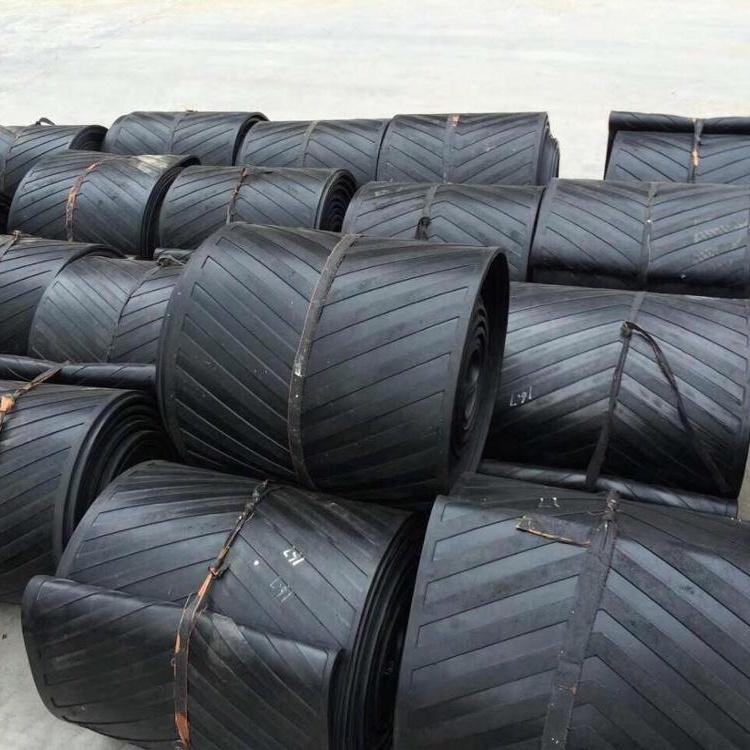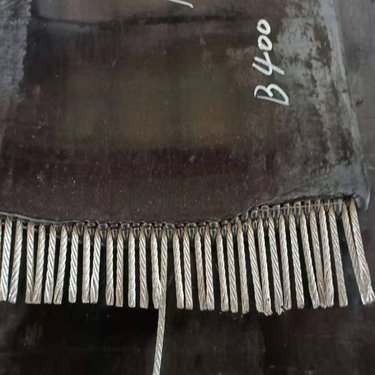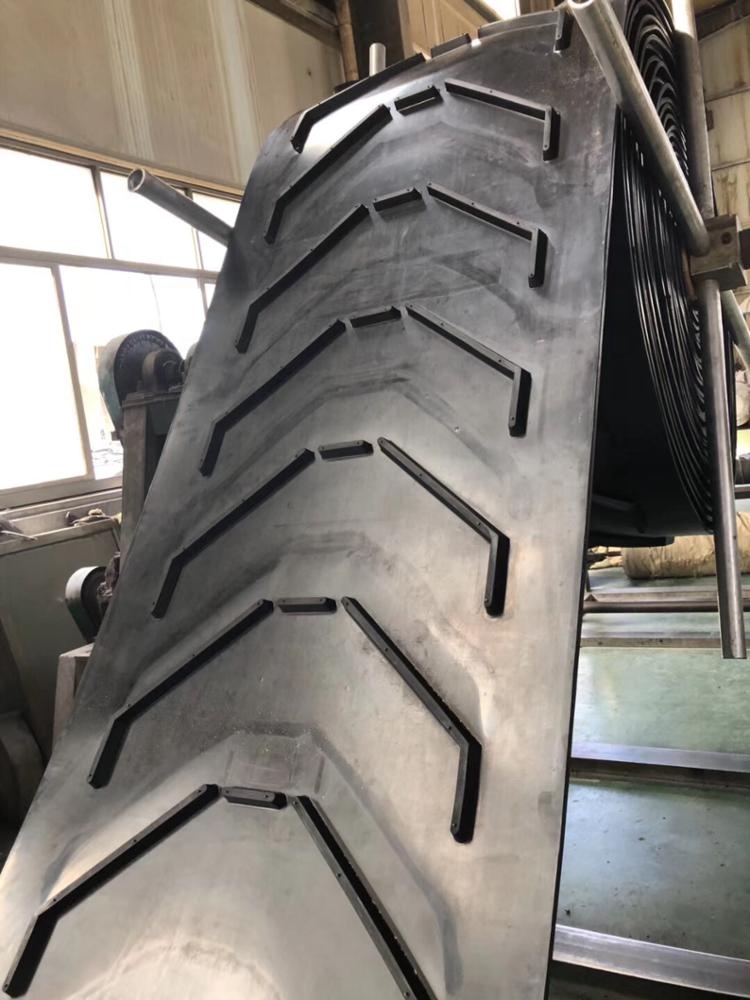
Heat resistance belt for Sinter plants agglomerate iron ore fine particles (dust), with other fine materials at high temperatures, to create a product that can be used in a blast furnace. The final product, so called “sinter”, is then used to convert iron into steel. The sinter is a small, irregular nodule of iron mixed with small amounts of other minerals. The sintering process fuses the constituent materials to make a single porous mass with little change in the chemical properties of the ingredients. At the sinter machine exit, the material is broken into smaller pieces by a breaker and is cooled down using a forced air stream. At the sinter cooler discharge, temperatures are still high, ranging 400 to 700 °C, so that the hot sinter can be transported only by a conveyor which can withstand very high temperatures.
Moreover, the sinter is a very abrasive material, acting as a micro-tool over the time that abrades the surfaces on which it is sliding. This type of sinter is also toxic and needs to be transported by a dust-tight conveyor to prevent fine particles from contaminating the environment and exposing the plant operators to safety hazards.
For this high-value product, reliability is the main feature required of any equipment designed to operate in sinter plants. In fact, a forced outage might prove to be extremely costly in terms of production losses and hence profit losses. Therefore the ideal conveyor for handling hot sinter, ensuring reliable, safe and environmental friendly operations. The Monster belting key component is the designed completely enclosed in a steel casing, suitable for preventing dust dispersion to the environment. A simple mechanical self-cleaning device removes the fine residuals from the bottom of the casing. The Monster belting can be equipped with the which is a chain conveyor enclosed in an independent casing, tailored around the Monster belting tail section. Its function is to receive the fine residuals, retreived from the bottom by the self-cleaning device.


HRT Chevron conveyor belts
Heat resistant Chevron conveyor belts are used for transporting wet materials and/or bulk (coal and ores, powders like sand, fine coal and granular materials) in inclined plane. The CHEVRON profiles prevent or reduce slipping and increase the quantity of conveyed product. Can carry bulk materials at 17-18° angles and packed materials at 30-50° angle.
The profile and the top cover are poured mono block, for high adhesion and resistance. Can be general use, temperature resistant or with same characteristics as flat belts.
Chevron conveyor belts can be used at temperatures from -30°C to +150°C.
1、Heat Resistant Conveyor Belt Feature:
| Item | type | ||||||
| type I | type II | type III | |||||
| variable range | |||||||
| Hardness | Difference before and after ageing (IRHD) | ±20 | |||||
| Max. Value after ageing (IRHD) | 85 | ||||||
| Tensile strength | variable rate in performance ≤ | 25 | 30 | 40 | |||
| Min. value after ageing Mpa | 12 | 10 | 5 | ||||
| Rate of elongation at break | variable rate in performance% ≤ | 50 | 55 | ||||
| Min. value after ageing | 200 | 180 | |||||
| Type Item level | Abrasive wear | ||
| type I | type II | type III | |
| First quality | 0.8 | 1.0 | 1.0 |
| accepts | 1.0 | 1.2 | 1.2 |
| Item | interlayer of cloth | cover layer and cloth interlayer | |
| Thickness of the cover layer≤1.5mm | Thickness of the cover layer>1.5mm | ||
| The average value of the longitudinal specimen shall be no less than | 3.0 | 2.2 | 2.6 |
| The peak value of the longitudinal specimen | 2.0 | 1.6 | 2.0 |
